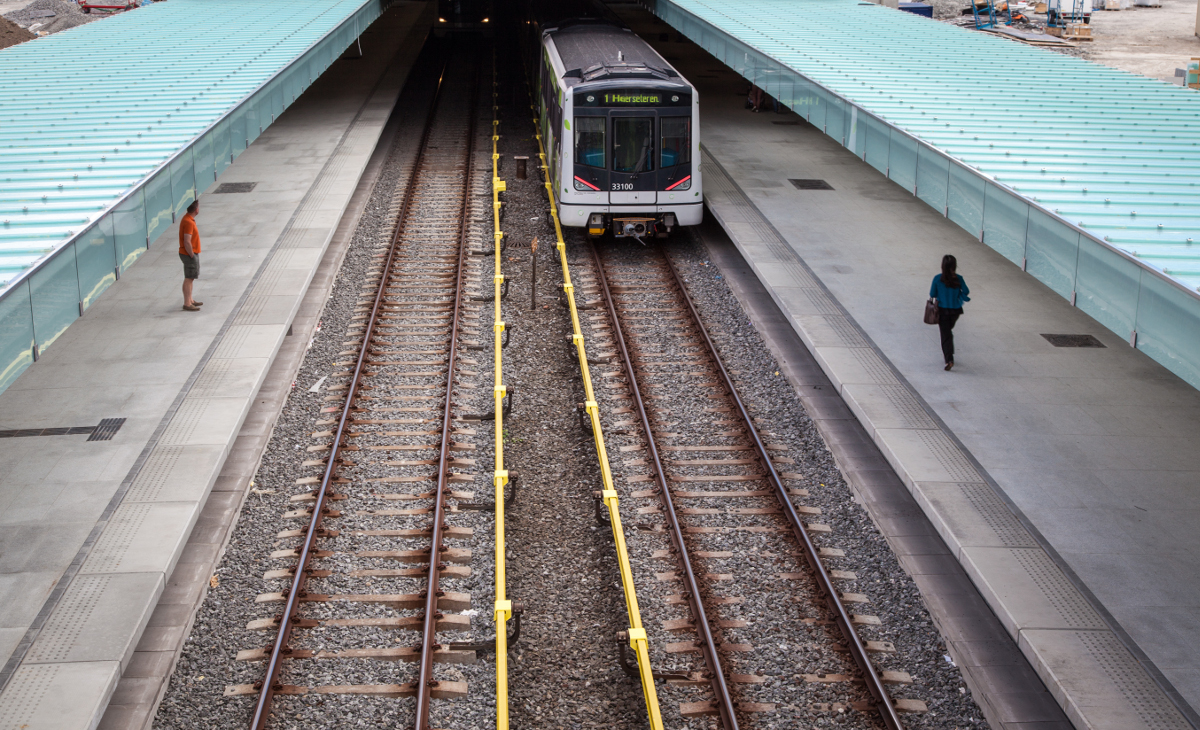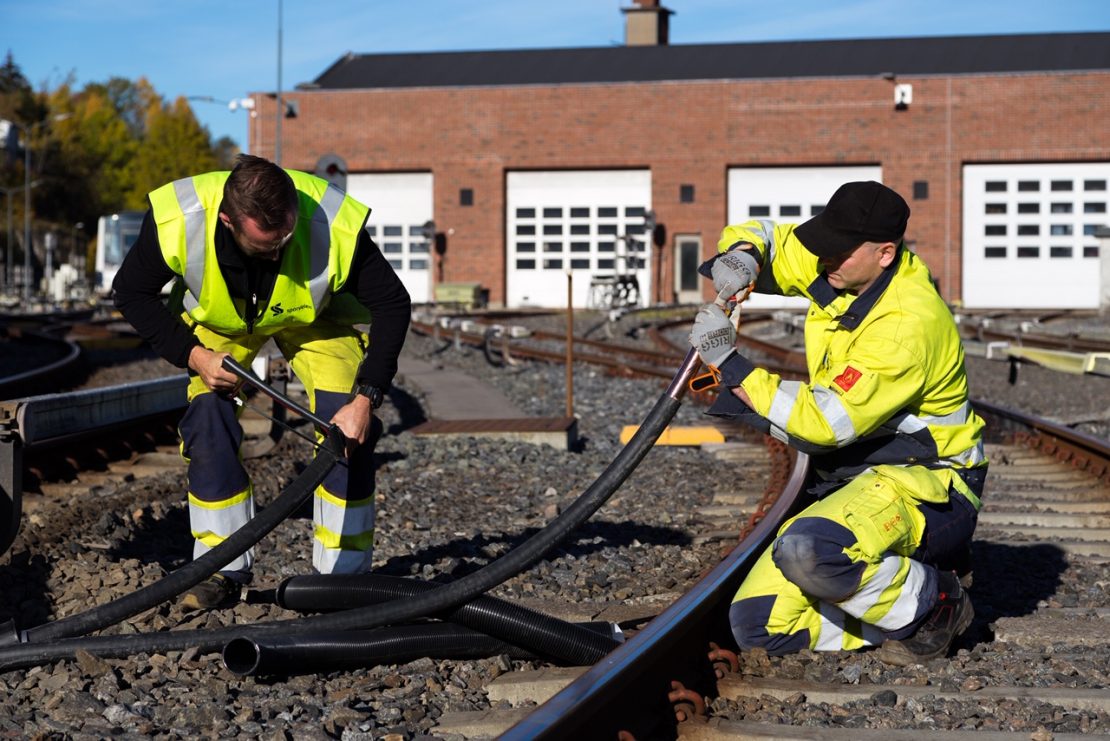
Next stop: Holmenkollen, Gråkammen or Tveita. With 268,000 passengers a day, the T-bane underground rail system is Oslo’s second most popular mode of transportation. The abbreviation T-bane (“T” stands for tunnel) has long been rooted in Norwegian vocabulary. The trains run on six lines with a total of 101 stations, and the network is 86 kilometres in length. The Oslo Metro is known for being one of the most modern in the world. It uses very little energy despite frosty temperatures of minus 25 °C in winter and high heat requirements. And the carriages can be almost fully recycled at the end of their lifespan.
The operator places high demands on more than just its rolling stock, as the infrastructure needs to withstand significant strain here in the North. This is particularly true of the cables in the rectifier stations that convert alternating current from the grid to direct current to power trains. These cables are double insulated and fireproof. “If there is an incident, it is vitally important that we get the trains out of the tunnel for starters,” says Lars Nilsen, Product Manager at LAPP Norway. “A fully reliable solution was the customer’s primary concern – which made it ours as well.”
Extra fire prevention
The result was a special cable with a complex construction combining several positive properties. The copper core has a cross-section of 400 mm2. Depending on the wiring, up to 1270 amps can flow through here at any one time. The conductor is encased in two layers of mica tape as a fire safety precaution. The conductor has two layers of insulation. Both are cross linked, making them suitable for a wider range of temperatures. To prevent electromagnetic pulses from escaping, the insulation is covered by a screening layer with a 30 mm2 cross-section. An EVA polymer sheath, which has also been cross linked, is placed on top. The cable is approx 44 mm thick and weighs 4,730 kilograms per kilometre – a genuine heavyweight.
The cable needs to withstand fire to ensure that the train carriages can still be supplied with electricity to drive out of the tunnel. The cable is halogen-free and prevents smoke emission. It does not produce toxic gases and has passed the NES 02-713 and NFC 20-454 toxicity tests. This is important if the line is blocked and the train cannot leave the tunnel. If this happens, passengers would need to be evacuated from the tunnel without having to inhale in smoke or irritating fumes.
To come up with such a solution, it wasn’t just necessary to reinvent the cable: the splicing also required a rethink. A fire-resistant cable splice for this application was custom-developed using technology from the offshore sector. This means both the cables and cable splices can withstand a fire while supplying the trains with power.

Flexible even at sub-zero temperatures
All these properties are not easy to achieve, but there is an added difficulty: the cable needs to be ultra-flexible. After all, the Norwegian chill does not just freeze water and fingers – it also makes plastics stiff and brittle. So a cable was required that can bend, even in frosty conditions. And the result is convincing: The cable is guaranteed flexible at temperatures down to minus 20°C with a small bending radius of just six times the cable’s outer diameter without thin transverse cracks appearing in the sheath on the outside of the curve. The cable is designed for use in temperatures of -40 to +90°C.
To complicate matters further, the cables are often drawn through old pipes which can contain gravel and grit. The cable for T-bane is therefore very smooth and has a low friction to keep the strain of pulling the cable through to a minimum.
A built-in appetite spoiler
Once the cable is in situ, it is far from immune to other damage. After all, rats can dwell in the pipes, and there is a reason why they belong to the order of Rodentia (from Latin rodere, “to gnaw”). Rats think plastic cable sheaths are delicious, so the cables have to have a rodent protection. Therefore a layer of fibre-glass tape is added under the sheath, to prevent them from feasting on the cable.
All T-bane lines pass through the inner-city Fellestunnelen (“Common Tunnel”). But of the 101 stations in the T-bane network, just 17 of them are in a tunnel – the rest are above ground. If the cable is laid outside, it is exposed to UV light. This is not a problem for the sheath material, which is also ozone-resistant.
LAPP Norway’s attention to quality hasn’t gone unnoticed with the customer: The second framework agreement was recently signed with the operator Sporveien Oslo. For Lars Nilsen, this is both an affirmation and an incentive: “We must be doing our job pretty well.” And by this he means delivery capacity, too. LAPP in Drammen always has this cable in stock. “After all, the T-bane is a lifeline for people here. It is our duty to keep it running.”
If you would like to find out what solutions we have to offer for your application, please do not hesitate to contact us.
